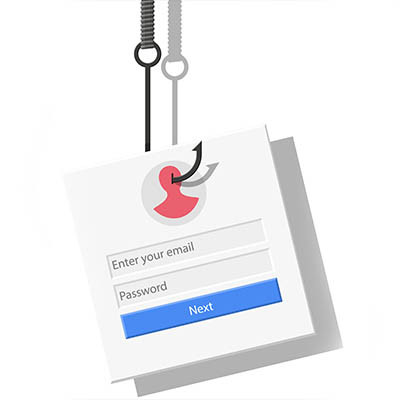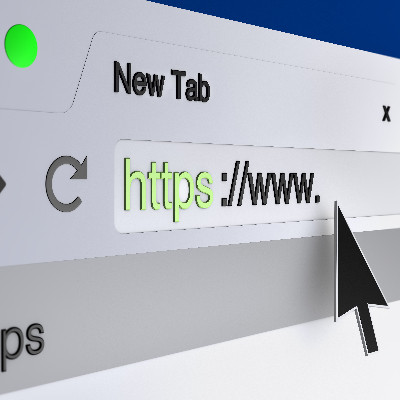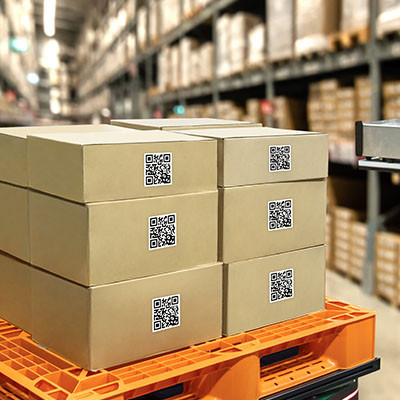Master Solutions Blog
Remember the days of overflowing “In” trays and filing cabinets threatening to take over entire rooms? For many businesses, that reality isn't history—it's Monday morning. The constant printing, copying, and shuffling of paper isn't just clutter; it's a drain on your resources. In this month’s newsletter, we go into why a Document Management System (DMS) is such a useful resource for modern companies.
For all businesses, especially small ones, staying current with technology is vital for survival and growth. Falling behind impacts your ability to deliver. Why not stick with what works? While that's a valid question, technology is more than problem-solving; it's about seizing opportunities and mitigating future risks.
If you are like most people, you are probably juggling a million things at work, and when an email pops up from your boss, your instinct is to take it seriously. Hackers know this, and they're getting good at creating fake emails that look exactly like they're from your manager to get you to make a mistake and give them what they need to access your digital accounts and the data that lies therein.
Do you remember the days of waiting patiently for websites to load or files to download? That kind of waiting isn't just inconvenient—it directly impacts productivity and customer satisfaction. For businesses, harnessing the power of increasingly fast mobile technology is becoming key to staying competitive and efficient.
Technology has evolved from a backend function to a critical force that drives business success, security, and competitiveness. Yet many businesses still take a “wait until it breaks” approach to IT, only addressing issues when something goes wrong. The truth is, aging technology can silently chip away at your bottom line—long before anything fully breaks.
When it comes to being productive, most people think of time management tools or multitasking strategies. One of the most overlooked factors in productivity is simply feeling good. That means physically, mentally, and emotionally. On days when your mood is high and your energy is up, work tends to feel easier and more manageable. That’s no coincidence. Productive individuals understand that how you feel directly impacts how you perform.
Your Point of Sale (POS) system is the backbone of your business, handling transactions, tracking sales, and keeping everything running smoothly. But like any technology, it can become outdated or start causing headaches. If you’re wondering whether it’s time for an upgrade, here are five major signs to look out for.
As a managed service provider, we talk to a lot of small business owners. Most of them are busy juggling everything from sales to staffing and understandably, cybersecurity isn’t always at the top of the to-do list. Unfortunately, threats from outside your business aren’t going anywhere. In fact, they’re getting more sophisticated.
You’ve probably heard the saying, “Teamwork makes the dream work.” Successful businesses have always counted on individuals to do their jobs well so they complement other employees’ efforts. Today, most businesses rely on digital systems. As a result, today’s technology has been increasingly developed to integrate collaborative features that push productivity forward. In this article, we’ll take a look at some collaboration tools that modern businesses use today to more effectively run their operations.
Your Internet browser is probably one of your most used apps. For this reason, it is important to know how to effectively use it. Regardless of what browser you use, you need to understand how to use these four very useful features. Let’s dig in.
When Microsoft released Windows 10, it was with massive fanfare because the previous version, Windows 8.1, was a reworked version that was initially designed to be a universal version for mobile devices, tablets, and PCs. It has been 10 years, and now Microsoft is set to retire the popular operating system this October 14th. This month, we wanted to discuss your options moving forward.
Running a small business sometimes feels like a never-ending juggling act. One minute, you're answering emails, the next, you're dealing with customer requests, and before you know it, the day's over, and your to-do list is somehow longer than when you started. The good news is that you don’t need to clone yourself to make your business work. You just need a disciplined plan to manage your time.
Running a small business is no easy feat, especially when it comes to managing supply chains. You’ve got to keep track of suppliers, shipments, inventory, and customer demands—all while keeping your sanity. Luckily, technology is here to help. Let's break down some of the key tech tools that small businesses are using to make their supply chains smoother and more efficient.
We’re always chatting about how cool technology can be—even though even the biggest tech fans might not know all the neat options out there. Even though Windows 10 is slowly stepping down as the most popular workstation, you might be surprised that more than 60% of work computers are still running it. That’s why this week, we’re diving into three awesome Windows 10 features (that also work on Windows 11) that can really make your life easier.
Managing an office these days means juggling tons of devices, and it can be a real hassle. You've got to keep an eye on every device, know who's using what, and notice any trends. If you're not already tracking your tech, it’s a smart move to start. An inventory management system can seriously simplify the process.
Decisive decision-making is a business staple. Without it, nothing would get done. Picking and choosing what to stay flexible about is one of the biggest question marks you can have when running a business. One aspect of your business that you always need some wiggle room in is your IT. This month, we take a look at what technology you should prioritize flexibility in and how to achieve that goal.
Your business runs on a budget, and how you spend that money affects whether you make a profit by the end of the year. One of the most important areas to focus on is your IT (information technology). IT is the backbone of any modern business, so including it in your budget is crucial. Let’s discuss why prioritizing IT in your budget can make your business more successful.
The Internet of Things (IoT) is one of the most intriguing technologies businesses can use. When brought into the fold, it has changed how offices function, bringing a range of benefits that enhance efficiency, productivity, and security. IoT devices and systems can streamline processes and create a more comfortable, productive, and sustainable work environment. This month, we discuss how small businesses can use IoT to improve their operations.
Keeping your smartphone safe for work is important. Your phone likely holds a lot of personal stuff, and if you use it for work, it has access to work emails, files, and other sensitive information. This makes it a tempting target for hackers. Here’s how you can protect it.
Managing your organization’s data is more than just another thing that you have to gloss over in your attempt at running your business. The simple truth is that your data is one of your business’ most valuable assets. There are several parts to every organization’s data management strategy, and today we will go through three of the most crucial: Storage, sharing, and security.




















